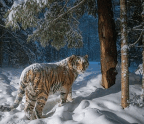

There’s nothing better than a fresh start and the beginning of the new year is a great time to make some photography resolutions, assess your skills and put a plan in place to improve your shooting and editing techniques.
Now that we have been able to put the restrictions of the Covid-19 lockdowns behind us, let’s seize the opportunity to pick up our cameras and fully immerse ourselves in photography in 2023.
Here, we’ve rounded up 23 of the best techniques, kit and editing tips to get you inspired in the new year. From shooting at night and capturing luscious landscapes to taking perfect portraits, and much more, we’ve got it all covered. Whatever style or genre you like to shoot, there’s expert advice at hand to help you become a better photographer in 2023.

01 GO FURTHER WITH A LONG LENS OR A TELECONVERTER
If you’re fanatical about photographing wildlife then a lens with a longer reach is essential. Long lenses aren’t just great for wildlife and sport, though; if you shoot portraits, then a 70-200mm telephoto is a great tool for producing flattering images, and this length of lens can also come in useful for some landscape photography situations. If you already own a 70-200mm lens but want to go further, then you don’t have to buy a new optic – a teleconverter can extend your reach by 1.4x or 2x, depending on the model, although in return it will cost you a stop or two of aperture.
02 Head into the darkness
Take a step into the dark by trying out night-time photography
You might not feel like heading out in the dark and cold, especially if it’s raining. However, these images were taken in the middle of February in exactly those conditions. Shooting at night isn’t easy, as there are technical difficulties to get around, including compositional and focusing issues, but the results are worth it. Enjoy opening the shutter to reveal what’s emerging from the dark in front of your eyes. You may need to tweak your composition a few times until you are happy with the result. For focusing, take a torch and use this to light your scene and focus.
Here, we captured our images as raw files to give us far more flexibility with the white balance setting at the editing stage, which needed correcting out of camera.
EXPERT ADVICE
• Experiment with the shutter speed. If you are shooting with a setting beyond 30 seconds then you will need to manually open and close the shutter and time your exposure. A remote shutter release will come in handy.• Ensure that• Experiment with the image aspect ratio – you don’t always need to shoot your images in the traditional 3:2 format. Try cropping your shots into a square for an arty result.






